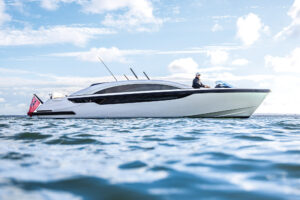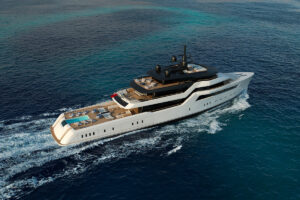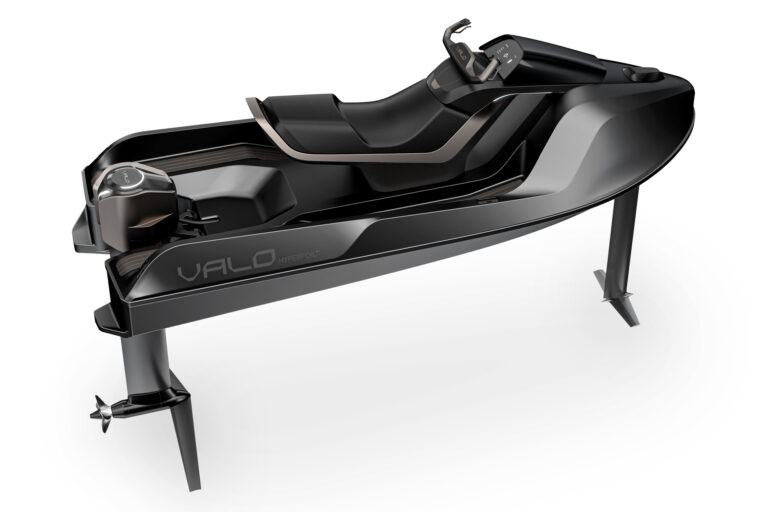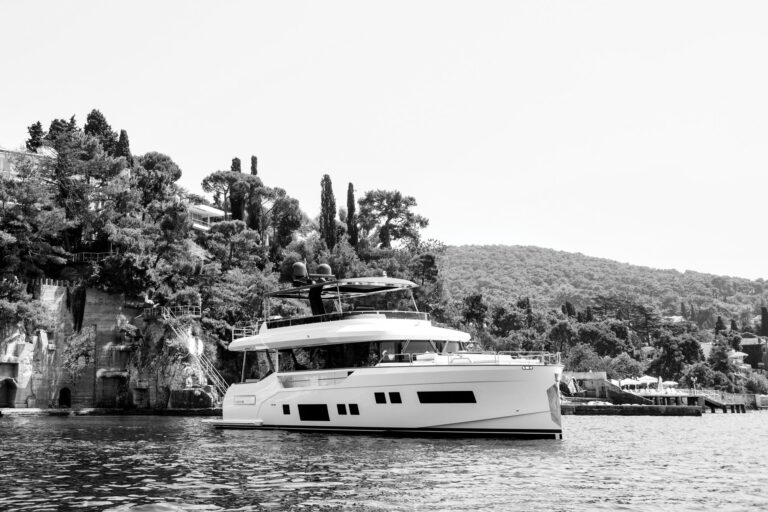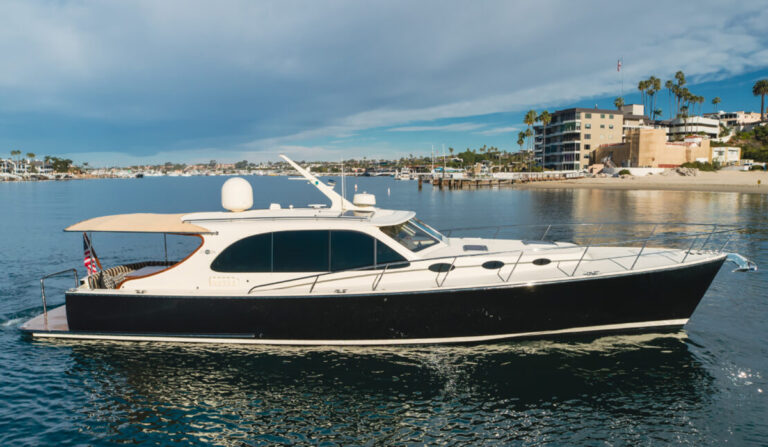Take a lifelong powerboater and talk him into sailing. Then let the wind rise to nearly 35 knots. What do you get? A soaking wet but smiling convert-well, semi-convert, maybe, but certainly a yachtsman with real appreciation for Holland Jachtbouw’s new Truly Classic 65.
Holland Jachtbouw’s stated goal in conceiving the Truly Classic line, which also includes 56-foot, 75-foot and 80-foot models, was twofold: timeless grace above trendy austerity, and speed without the constraints of rating rules. These semi-custom, aluminum sloops are built in the same facility and by the same workers as the builder’s larger custom yachts, so fine finishing is ensured.
Our test boat, Windrose, hits the mark Holland Jachtbouw set. She combines a traditional appearance with modern hull and rig design to deliver an experience pleasing to all the senses. I boarded her last spring after a mild morning and expected a quiet, leisurely afternoon trip on Holland’s great freshwater sea, the Ijsselmeer.
As we passed under the shadow of the imposing stone castle that guards the scenic little harbor at Medemblik, though, the crew mentioned the changing forecast. The wind generators-modern steel and carbon-fiber behemoths whose masts rise from the sea in a line like those of a huge sunken windjammer-had already been shut down as a precaution against heavy-weather damage. The wind picked up and continued to rise as we headed out.
Windrose’s dark hull, raw teak decks and varnished mahogany doghouse mean her appearance is every inch that of a true classic. I’m a sucker for skylights, arched windows and highly cambered housetops. Almost all the details are right, down to the red interiors on her vent cowls. A purist might prefer highly impractical polished bronze deck equipment to her sensible stainless.
Appearances, however, became secondary as we headed out of the harbor, with the wind continuing to build and Medemblik’s castle retreating quickly into the distance. What mattered at that point was having a safe and responsive wheel, a yacht soundly constructed and outfitted with the best equipment.
Windrose retains the long overhangs of Fife, Herreshoff and others to define her classic appearance and quickly picks up waterline length as she heels. This enhances her speed potential as well as her stability, letting her handle the tall modern rig she sports as well as the winds we enjoyed that day. The Ijsselmeer is relatively shallow without a great deal of fetch to build large waves, so it can deliver extreme wind without much sea, leaving sailors subject only to the sail area and stress limitations of their vessel.
Our test boat’s nimble response that day confirmed the well-earned reputation of Andre Hoek as a skilled and versatile designer. She is no dinghy, of course, but she brought to mind the little 420s I sailed on Long Island Sound in earlier years. stability constraints and no reason to ease sail, even as the first sheet of spray crossed the windward sheer strake and caught me in a full frontal assault.
I had visited Hoek’s office earlier in the week and found it, like Windrose, a remarkable blend of old and new. The design firm is in the little village of Edam, famed for its cheese, and is housed in a well-preserved building constructed as an orphanage in 1590. In stark contrast to Hoek’s subdued formal conference room, which retains its original wall mural, fireplace and beamed, high ceiling, the loft is a light, airy hive of computer-intensive design activity.
In addition to a number of smaller yachts, Hoek had designs under way for a 165-foot sloop and a 175-foot ketch to be built by other Dutch yards. Holland Jachtbouw builds yachts penned by designers other than Hoek, including Gerard Dijkstra and Ted Hood. The cross pollination of design ideas and construction techniques that results from such open arrangements is far superior to the closed system of in-house design used by many builders.
Windrose was built for an owner who sails her with his family. As Holland Jachtbouw puts it, “Sailing with young children on board is like single-handing with one hand tied behind your back. Thus, the yacht has a number of features designed to accommodate the family and make life easier.
There are basic things, such as netting on the rails, and more sophisticated items, including push-button control of the sails from the cockpit. A Maxwell anchor windlass and its chain trough are housed under flip-up hatches to keep the foredeck uncluttered. The traditional keyhole shape of Windrose’s cockpit allows family members proximity to the helmsman, without being in his way, and a folding table between port and starboard bench seats is convenient to the companionway and helm without intruding. Spacing between the seats is just right for bracing in a blow, and seat backs are low enough to lean outboard for a better look forward.
Passing through the companionway into Windrose’s chart room and navigation station offers a feast for the senses. Soft blue velvet upholstery contrasts with the honey-varnished mahogany bulkheads. The high-gloss white paint of the planked overhead mirrors light maple soles banded with darker mahogany. It is a tasteful décor that carries throughout.
The mahogany continues forward into the depths of the yacht and could create an interior that is oppressively dark. Not to worry. Five large, well-placed skylights bring in loads of sunshine and, in lighter weather, fresh air. There are two skylights over the open galley, two more above the saloon and dining area, and one forward, centered on the master stateroom.
Guests, or in this case, children, are accommodated in two cabins beneath and outboard of the doghouse. The starboard-side cabin has a tight lower double berth and a twin above; lower twins are fitted in the portside cabin. The two cabins share a head to port that also serves as a day head.
Opposite the head is the galley, which is spacious yet proportioned to allow easy use when heeled. A wide L-return, sort of a semi-island in the countertop, houses the engine on centerline.
The master stateroom has an island double berth forward and a head with integral shower. I’d like to see a separate shower, but I must keep reminding myself that as spacious and open as Windrose is, she is not a megayacht. There is only so much space, and Hoek wisely devoted a lot of it to the saloon/dining area.
The area is centrally located just abaft the mast step for minimal motion and maximum comfort. Open to the galley, it is the undisputed heart of the yacht and is sure to be the center of family activity and memory-building for Windrose’s owners and their children. n
Contact: Holland Jachtbouw, (011) 31 75 6149133; fax (011) 31 75 6149135; hjb@hollandjachtbouw.nl; .

